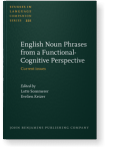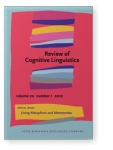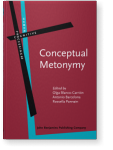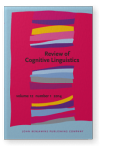Carmen Portero-Muñoz
List of John Benjamins publications for which Carmen Portero-Muñoz plays a role.
2022 Time-measurement constructions in English: A corpus-based exploration English Noun Phrases from a Functional-Cognitive Perspective: Current issues, Sommerer, Lotte and Evelien Keizer (eds.), pp. 311–362 | Chapter
Time-measurement expressions such as five-year plan, 10 years’ time and 25 years service occur frequently in English. All such expressions consist of a cardinal numeral, followed by a time-noun (N1) then a second noun (N2). The time-noun has one of three orthographic forms: the bare-form, the… read more
2022 Forty years of metonymy: The time-measurement pseudo-partitive construction in English Living Metaphors and Metonymies, Brdar, Mario and Rita Brdar-Szabó (eds.), pp. 172–194 | Article
This study contributes to the existing body of research that aims at showing the impact of metonymy in grammar. In this case, new evidence will be provided by exploring the English pseudo-partitive construction of time measurement, illustrated by ten years of marriage. By using corpus data, it… read more
2018 Chapter 10. Are smartphone face and Googleheads a real or a fake phenomenon? The current role of metonymy in semantic exocentricity Conceptual Metonymy: Methodological, theoretical, and descriptive issues, Blanco-Carrión, Olga, Antonio Barcelona and Rossella Pannain (eds.), pp. 261–286 | Chapter
This paper seeks to provide evidence of the pervasiveness of metonymy as a resource triggering the creation of examples of a remnant category in morphological research, so-called ‘exocentric’ compounds. Exocentricity is not a homogeneous phenomenon in English, where it is typically represented by… read more
2014 A constructional approach to transitional formatives: The use of -head in so-called ‘exocentric’ formations Review of Cognitive Linguistics 12:1, pp. 160–192 | Article
The noun head is commonly found in the second position of many English noun compounds. Typically, noun compounds with head in the right are endocentric formations, that is, composite forms which designate a more specific type of the concept denoted by head (e.g. pinhead). The noun head is also… read more



